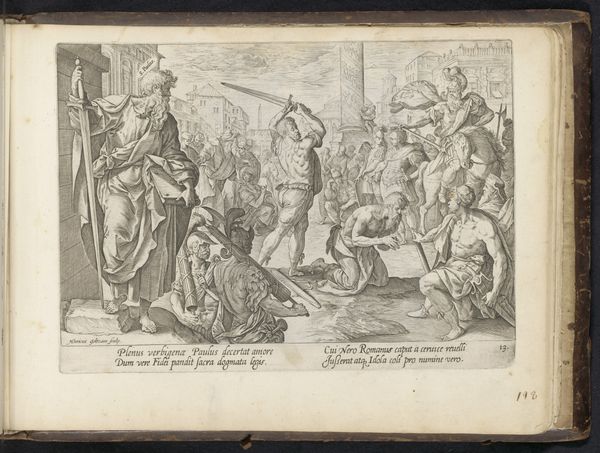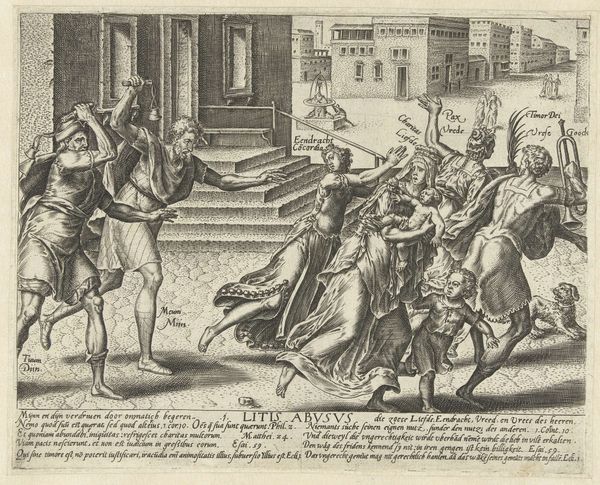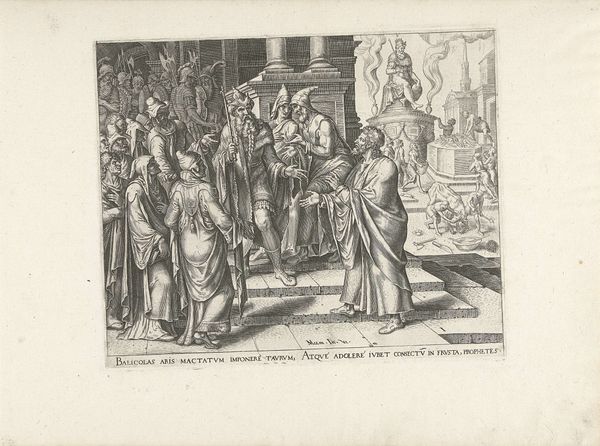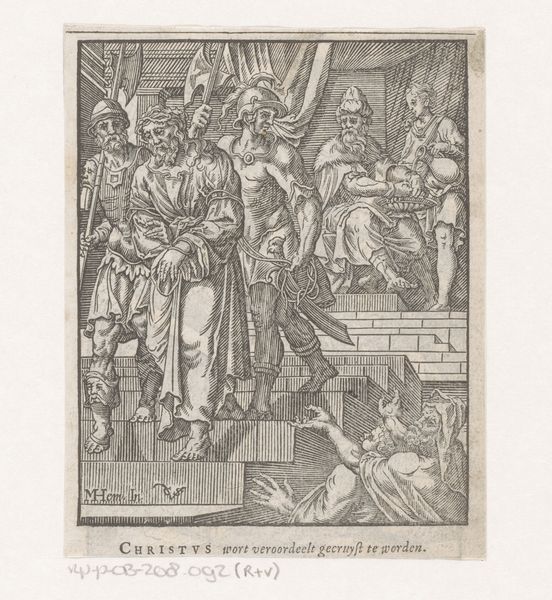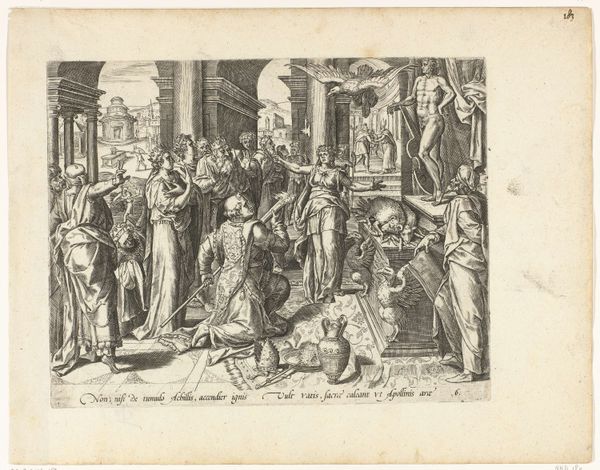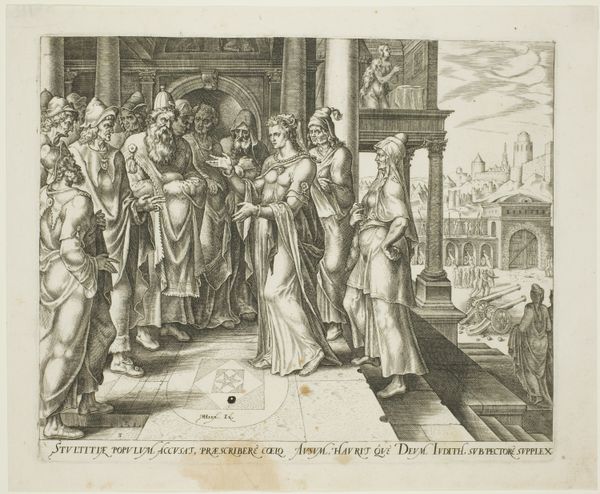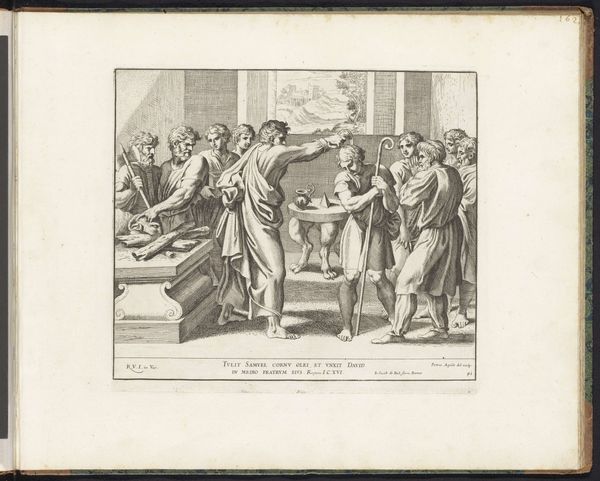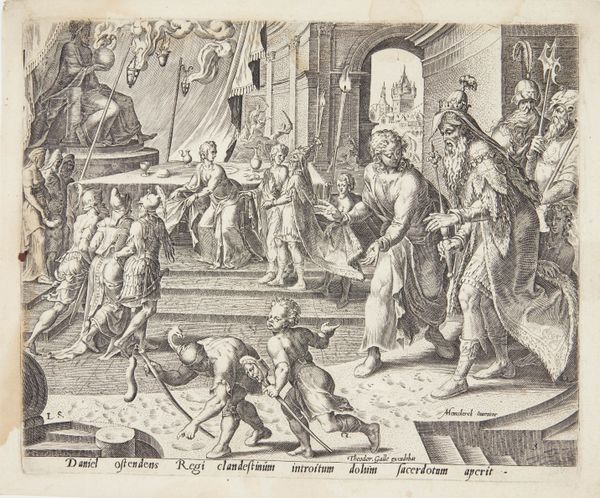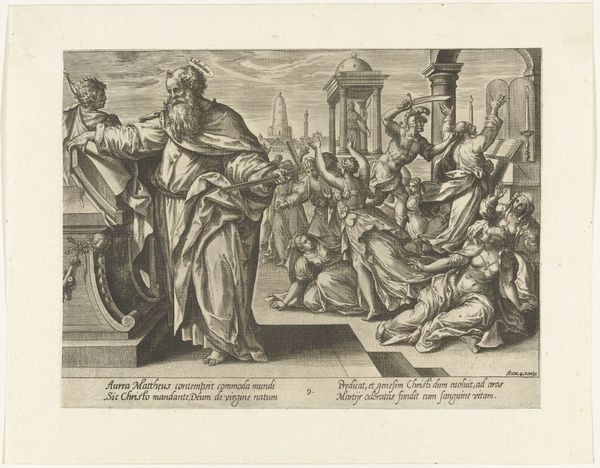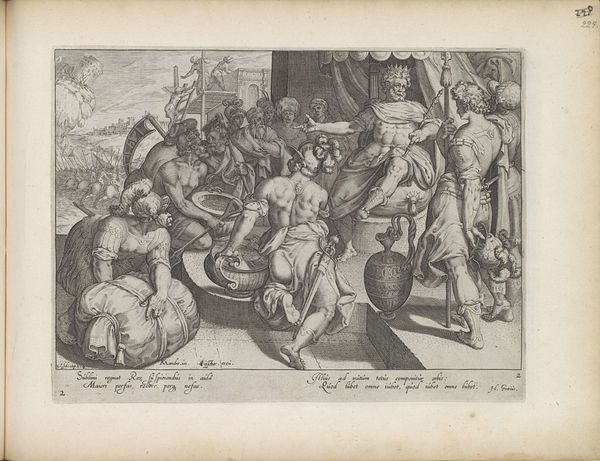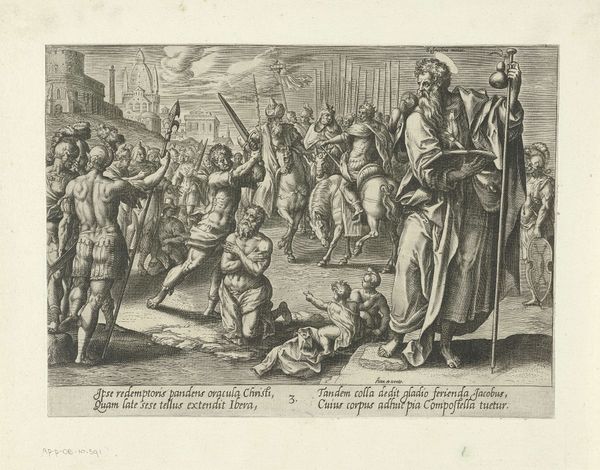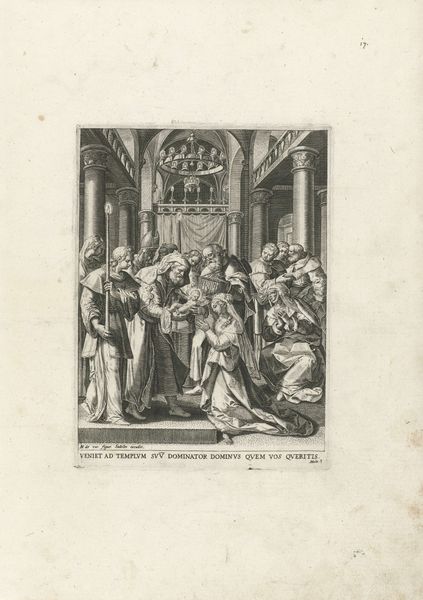
print, engraving
#
narrative-art
#
baroque
# print
#
old engraving style
#
figuration
#
line
#
history-painting
#
engraving
Dimensions: height 207 mm, width 283 mm
Copyright: Rijks Museum: Open Domain
Curator: Before us, we have an engraving titled "Martyrdom of Simon Cananeus and Jude Thaddeus." It was created sometime between 1576 and 1643, and is held here at the Rijksmuseum. Editor: What strikes me first is the dramatic energy; the composition, with all those figures in motion, seems almost overwhelming despite being in monochrome. Curator: As an engraving, its lines are the primary carrier of meaning. Look at how they are deployed: closely packed to create areas of deep shadow, which convey the brutality of the martyrdom being depicted. Editor: Exactly! I am drawn to the stark symbolism. The pair of martyrs stand in the foreground bathed in light, Simon holding a cross, almost serenely, in contrast to the chaos around them as they're besieged by figures wielding various crude instruments of death, smashing idols in the background. It makes me think about cultural transitions and how old beliefs are violently overturned. Curator: And the tools of that overturning—look at the axes, saws, and hammers. They are instruments of both iconoclasm and industry; the very tools used to build and maintain are turned against the symbols of power, or rather, what some may define as pagan and others as sacred. Notice how carefully those are rendered. Editor: There is a clear distinction between the holy figures in the front and the frenzied crowd tearing down monuments in the background, it seems the intent here isn’t to simply illustrate, but to idealize and perhaps instill a moral message: even in the face of horrific violence, faith can grant serenity. It echoes throughout history wherever groups come into conflict. Curator: Engravings like these circulated widely; they were relatively inexpensive to produce and distribute. They served to document not only historical or religious events but also particular socio-political interpretations, a way of building social agreement that can influence events still unfolding, making the viewer a participant through witnessing and potentially, imitating the subjects’ acts of faith and, by extension, sacrifice. Editor: Indeed. That combination of craftsmanship and visual rhetoric speaks to how art shapes and reinforces our beliefs over time. Thanks to this close look, I am struck by how images like these helped build a narrative—one that we’re still grappling with today. Curator: The confluence of artistic skill, material realities, and social messaging, I see them all working together in this piece. A very moving, intricate work.
Comments
No comments
Be the first to comment and join the conversation on the ultimate creative platform.
